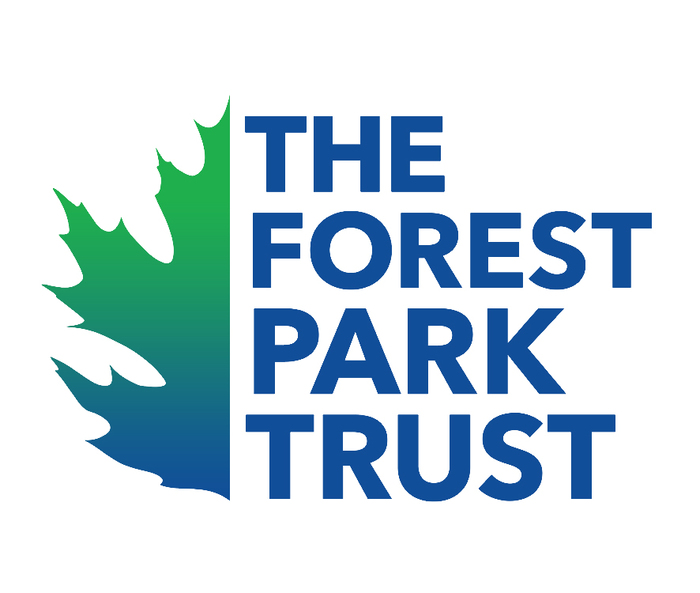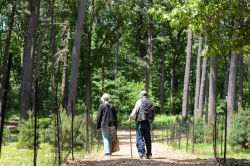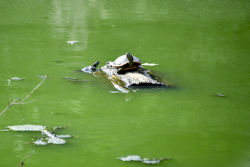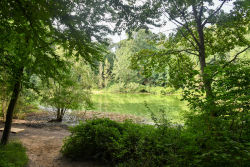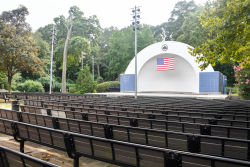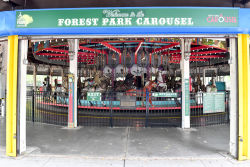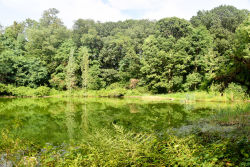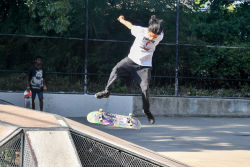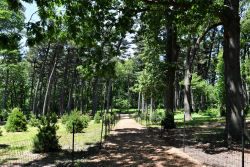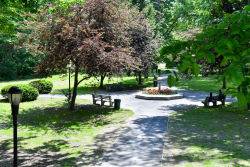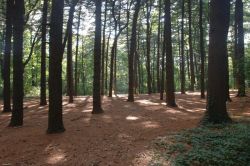Forest Park
Jackson Pond Playground
This playground is named for Jarvis Jackson. Little is known about the life of Jackson, who was a former Park Superintendent of Forest Park. Forest Park, a 538-acre park located near the center of Queens, was the largest park in Queens at the time of its acquisition in the late 19th century. This 1.1-acre playground stands on the south edge of the park, at Park Lane South, 108th Street, and Myrtle Avenue, bordering the neighborhood of Richmond Hill.
Named for the pond that was once the center of Richmond Hill’s leisure activity, this was also the site of the Forest Park Lodge, a mansion once owned by Abram S. Hewitt (1822-1903), New York City’s mayor from 1886 to 1888. The City of Brooklyn acquired this parcel of land sometime between 1895 and 1898 for the purpose of expanding its parkland. The City of New York took over the land after the consolidation of the five boroughs on January 1, 1898. Jackson and other park officials occupied the mansion surrounded by what was then called Brooklyn Forest. In 1941, Parks tore down the old mansion to make way for a new playground.
Local children frequented the popular Jackson Pond in all seasons, swimming, fishing, sailing model boats, and ice-skating. Parks replaced the mud bottom with a brownstone pebble gravel bottom in 1931, and the Works Progress Administration (WPA) improved it for the local residents in 1941. By 1966, the pebble bottom became structurally unsound, raising concern about the safety of park-goers, especially during ice-skating season. The pond was filled with cement, and became used for basketball courts.
The hill referred to as Richmond Hill was created by the glacier that formed Long Island when it melted, leaving behind huge piles of stones and rocks it had dragged across the continent. The name was inspired either by a suburban town near London, England, or because of Edward Richmond, a landscape architect in the mid-1800s who designed much of the neighborhood. In 1868, a successful banker named Albon P. Man bought the nearby Lefferts and Welling farms, and hired Richmond to lay out the community. Over the next decade, streets, schools, a church, and a railroad were built, making the area one of the earliest residential communities on Long Island, of which Queens County was a part. Many of the Queen Anne Victorian homes of old Richmond Hill still stand in the area today. Richmond Hill was home to Jacob A. Riis (1849-1914), the journalist and photographer who championed the plight of New York’s immigrants and distressed citizens. He moved to Richmond Hill in 1886, and spent many of his most productive years living in the home he built at 84-41 120th Street.
Jackson Pond Playground features play equipment with safety surfacing, drinking fountains, a children’s sprinkler area, a flagpole with a yardarm, game tables, and benches. The public restroom is operated by the Department of Transportation for “Safety City,” a children’s traffic safety program. In 2001, City Council Member Thomas V. Ognibene provided $518,000 for a renovation of the basketball courts across Myrtle Avenue. The improvements include the construction of two basketball courts, a sitting area, and a fountain made of glacial rocks. Adjacent to the playground lies Jayne Carlson (1946-2000) Triangle, named for an active member of the Richmond Hill community and former vice president of the Richmond Hill Block Association, which sponsors the Annual Forest Park Fair occurring at Myrtle Avenue and Park Lane South.
Check out your park's Vital Signs
Clean & Safe
Green & Resilient
Empowered & Engaged Users
Share your feedback or learn more about how this park is part of a
Vital Park System

Know Before You Go

Links
Contacts
Forest Park Administrator: (718) 235-0815
Forest Park Golf Course: (718) 296-0999

